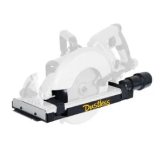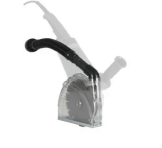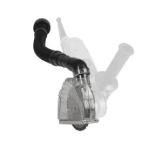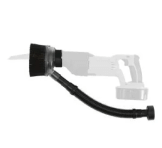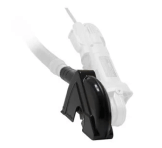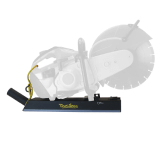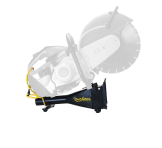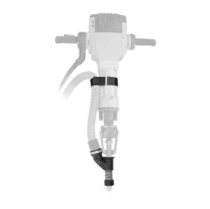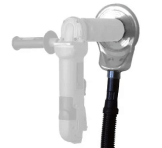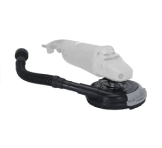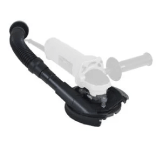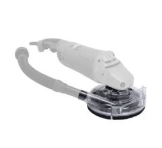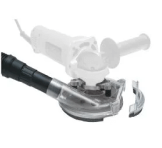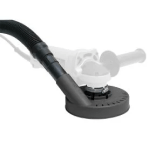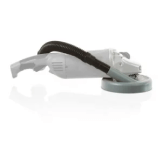The Name in Dust Control & Containment
Dustless Shrouds
Many of the Dustless Technologies products are designed and assembled in the USA, and our unique line of Dustless cutting shrouds and other dust management products help keep construction, painting, renovation, flooring, automotive, marine, and industrial projects dust-free. Every Dustless shroud is designed with a universal mount that fits most major brands of tools.
The Benefits of Dustless Shrouds
Our line of Dustless cutting shrouds, vacuums, and other attachments are powerful enough to take on any project of any size you may have. Whether you’re working on something commercial or residential, you will find that our dust shrouds are an excellent add-on that makes your job easier and more productive. In addition to its capacity, our equipment is able to trap dust and particulate airborne matter, preventing those contaminates from infiltrating the space around you. Each product is specially designed to effortlessly suction away dirt and debris, which are commonly found on worksites. If there is a lot of dust in the air, it can become a health hazard to workers, who will begin to experience respiratory issues. Clear, dust-free air is necessary in any working environment, making Dustless Technologies and Dustless cutting shrouds essential equipment to have in your arsenal.
Dustless Cutting Shrouds
Whether you cut wood, drywall, concrete, metal, plastic, or anything else that makes a cloud of fine dust, the vacuum suction pulls the dust out of the air right away. Each Dustless cutting shroud makes your job more efficient in addition to saving you time and money in the cleanup process. It's a favorite accessory among renovation and general home improvement professionals because it allows you to work indoors without having to move furniture or vacate the premises.
Dustless Drilling Shrouds
Drilling creates dust, and fine dust must be quickly contained to keep areas tidy and dust-free. With Dustless drilling shrouds, the vacuum suction pulls the dust out of the air and traps it before it can get far enough to cause a mess. Dustless drilling shrouds keep you productive and your job sites clean, saving you time and effort in the end.
Dustless Grinding Shrouds
Grinding generates incredible amounts of dust, debris, and dangerous particulates that threaten the personal health of your workers. It also makes areas dirty, which is hard for anyone to work in and requires cleanup throughout the workday. Whether grinding, concrete, metal, plastic or anything else that creates dust, the grinding shroud and vacuum attachment swiftly suck the dust out of the air. Our Dustless grinding shroud is the best solution for maintaining clean work areas.
What is a Dust Shroud?
A cutting shroud is a device that creates a controlled path for dust and debris, containing it and preventing its dispersion into the air. When the shroud is attached to your tool and vacuum, they work together to control dust generation at the source. Instead of sending plumes of dust and other contaminants into the air, dust shrouds direct it into the vacuum where it is trapped away. The filters on our vacuums keep it sealed in a large collection bag until it is ready to be disposed of. Each Dustless shroud is designed with a universal mount so that it will conveniently fit most major types of tools.
EPA, RRP, OSHA, & NIOSH compliance
Dustless Technologies offers universal and cost-effective dust collection systems, including various vacuums designed to help meet EPA RRP, OSHA, and NIOSH compliance standards. Our wet+dry vacuums are essential tools for construction companies, contractors, and DIYers, ensuring a cleaner and safer workspace. These vacuums do more than just clean—they are specifically engineered to control dust and reduce exposure to harmful particles, helping to maintain compliance with environmental and safety regulations. Additionally, our grinding shrouds, cutting shrouds, drilling shrouds, and additional accessories create a tight seal for optimal performance, helping users comply with these regulations by containing dust and debris during operations. By keeping workspaces dust-free, our Dustless Technologies vacuums and shrouds support regulatory requirements and contribute to healthier working conditions.
Learn more about Dustless Cutting Shrouds
Discover what people have said about us
Shop Dustless Today
Shop our complete collection of dustless shrouds, dust collection, and dust management products today. Keeping your work areas clean, safe, and dust-free has always been our top priority. Now you can rest at ease with the best tools and equipment available.
